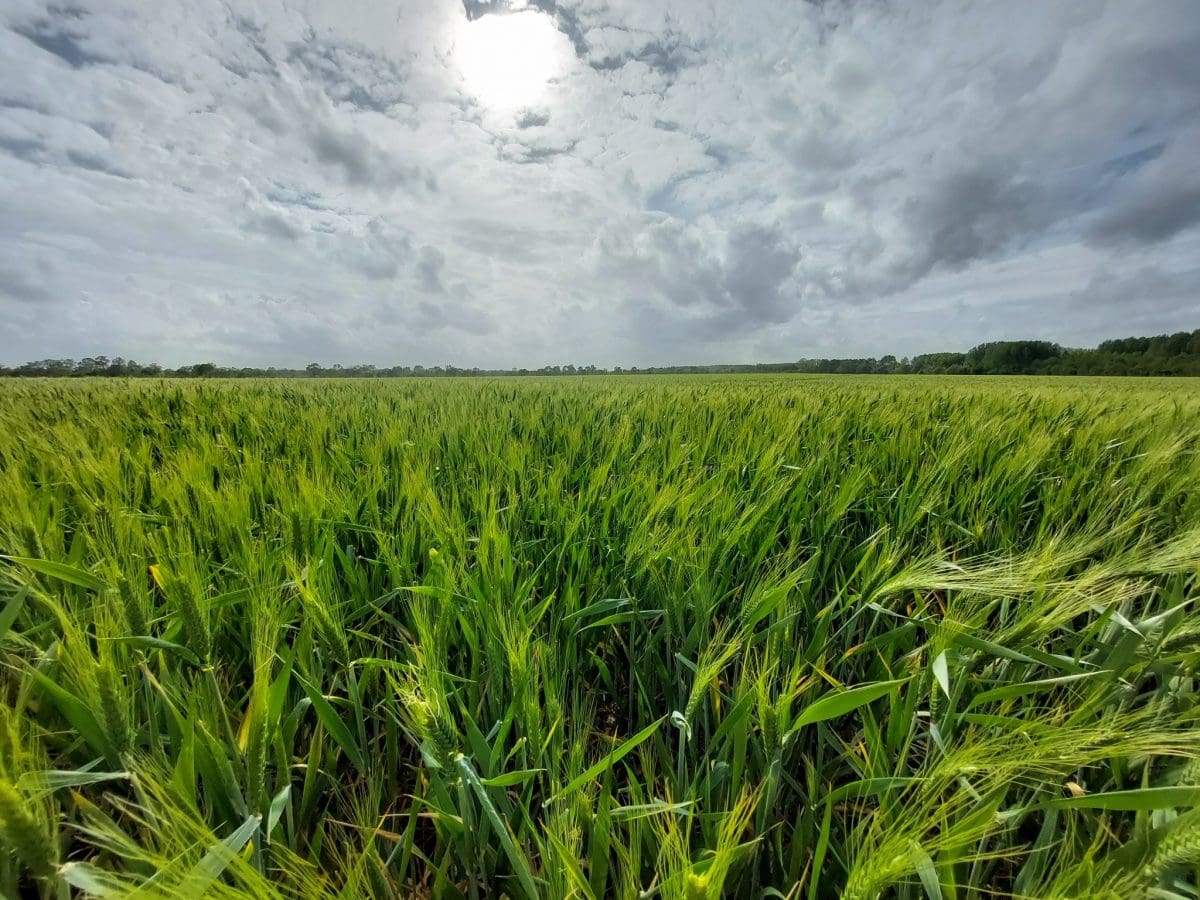
In France, crops including this field of durum have benefited from recent rain. Photo: François Pétorin
LARGE swathes of Europe have been denied a traditional spring after enduring one of the coldest Aprils in many decades. This hindered the growth and development of winter crops, and delayed the planting and emergence of
spring and summer crops across much of the continent.
These conditions were in stark contrast to warmer-than-average temperatures that dominated late March weather in many countries. On the coldest April days, minimum temperatures were among the lowest on record, with severe frosts battering crops in a belt that extended from Scotland in the north to Italy and Greece in the south. Fortunately, it is still early in the season, and the negative impacts on winter and spring crop production are expected to be minimal at this stage. However, several instances have led to a downward revision of yield forecasts for canola and durum wheat in parts of France and Italy.
Total wheat production for the 27 member states of the European Union is expected to increase 7.79 million tonnes (Mt), or 6.2 per cent, to 292.65Mt on the back of more favourable seeding and growing conditions, especially in France. An increase of 3.5pc in the seeded area was the primary contributing factor, with the average yield up just 2.6pc.
Barley production is also expected to experience a modest rebound in output with the improved seasonal conditions. Total EU production is forecast to increase by just 1.28Mt, or 2.3pc, to 56.5Mt, emphasising how well the crop performed last year compared to wheat across most of the EU, France being the exception.
Canola is the other big-ticket winter-crop commodity in the EU, but production is now forecast to be quite similar to last season, with the cold start to the spring taking its toll. Farmers are forecast to harvest 16.46Mt in 2021 compared to 16.34Mt last year. The total planted area will be down slightly, with a higher average yield expected to compensate for that loss.
French season improvement on 2020
FranceAgriMer released its latest crop report for the EU’s biggest grain producer last Friday. French crop conditions remain well above the same time in 2020, but the data did reveal the French soft wheat crop had deteriorated for the fourth successive week. In the week to May 3, the government farm agency estimated 79pc of the soft wheat crop was in good or excellent condition, down from 81pc a week earlier.
Rains returned to much of France over the last couple of weeks, and there is more on the forecast, easing production concerns after the dry start to spring. The benefit of this soil moisture boost was reflected in last week’s two percentage point decline in soft wheat conditions compared to a four-percentage point decline in the seven days to April 26.
The proportion of the durum wheat area in the good-to-excellent rating category was unchanged week on week at 69pc, after tumbling from 77pc in the previous seven-day reporting period. The winter barley crop was rated 76pc good to excellent, down from 77pc the previous week and 81pc two weeks ago. On the other hand, the spring barley crop was unchanged in last week’s report at 82pc after falling five points a week earlier.
Despite the downward trend, French crop ratings remain higher than at the same time in 2020 when developing crops were battered by torrential rain. This time last year, the good-to-excellent score for the French soft wheat crop was just 57pc. The barley rating was slightly higher at 59 pc.
This season’s superior crop conditions are reflected in a rebound in French production estimates for the upcoming harvest. The total wheat crop is forecast at 36.19Mt, up 19.2pc, or 5.83Mt compared to last year. The improved production forecast results from a 14.4pc increase in the area planted to soft wheat and a slight increase in the average yield from 6.82t per hectare to 7.15t/ha.
The year-on-year barley production recovery is very similar, up 20.5 per cent, or 2.15Mt, to 12.63Mt. However, this is primarily a yield story, with the planted area only up 1.2pc. The average yield is forecast to jump by 19pc, or more than 1t/ha to 6.33t/ha.
Canola does is tough
The French canola crop has perhaps been the worst affected by the string of severe frosts in April, striking as the early winter varieties were in a sensitive flowering stage. This followed reports back in early March that canola crops in several regions had been hit so hard by early-season cold snaps and pest invasions that fields were sprayed out and resown to spring barley.
The French farm ministry estimates the canola area at 990,000ha, down from 1.13Mha in its December update, and 11pc lower than last year’s planted area. Production is now forecast to be 314Mt, down for the fourth consecutive season. This is 29pc lower than the five-year average and 44pc lower than the record 2008-09 crop of 5.59Mt.
Global balance sheets are tightening across the board and the world can ill afford production hiccups in Europe this year. The hole in world corn supply is growing with the ongoing dryness in Brazil and an open cheque book in China. As prices rapidly escalate, rationing has begun in earnest. Wheat, and to a lesser degree barley, will be called on to partly fill the emerging chasm. The oilseed story is no different, with supplies at record lows in many jurisdictions, including major European producers, and question marks hanging over northern hemisphere
production estimates.

HAVE YOUR SAY